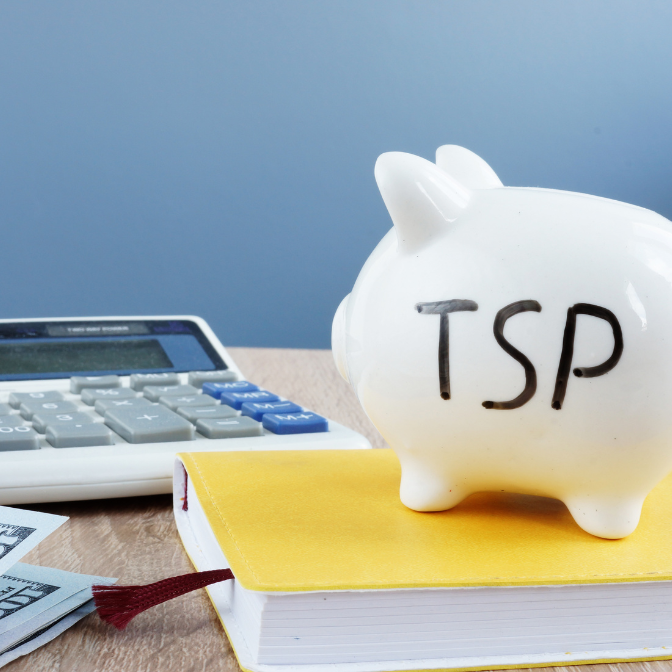Federal Retirement Savings: Unveiling the TSP and Its Advantages

Federal Retirement Savings: Unveiling the TSP and Its Advantages
Key Takeaways:
- The Thrift Savings Plan (TSP) offers federal employees low fees, tax advantages, and employer matching contributions, making it a powerful tool for building retirement savings.
- By starting early, contributing consistently, and monitoring investment allocations, federal employees can maximize the benefits of TSP and secure a comfortable retirement.
Introduction
Planning for retirement as a federal employee involves strategic decision-making, and one of the most crucial aspects is saving for the future. The Thrift Savings Plan (TSP) stands as a cornerstone of federal retirement savings, offering numerous advantages to employees. In this comprehensive guide, we’ll delve into the intricacies of federal retirement savings, highlighting the benefits of TSP and strategies for maximizing its advantages.
Why should federal employees prioritize TSP for retirement savings?
Federal employees have various options for retirement savings, but the TSP holds several advantages that make it a top choice.
1. Low Fees and Expenses
One of the most compelling reasons to prioritize TSP for retirement savings is its low fees and expenses. Unlike many private retirement savings plans, the TSP boasts some of the lowest administrative and investment fees in the industry. These low fees translate to more of your contributions going toward building your retirement nest egg rather than being eaten away by fees.
With the TSP, you’ll find that your hard-earned money isn’t being siphoned off by high administrative costs or excessive investment fees. Instead, your contributions can benefit from the power of compound interest, allowing your savings to grow more rapidly over time.
2. Tax Advantages
TSP offers significant tax advantages for federal employees. Contributions to traditional TSP accounts are made on a pre-tax basis, reducing taxable income in the current year and allowing investments to grow tax-deferred until withdrawal in retirement. This tax-deferral feature allows your investments to compound over time without being eroded by taxes, maximizing your potential returns.
Moreover, TSP offers Roth TSP accounts, which allow contributions to be made on an after-tax basis. While contributions to Roth TSP accounts won’t provide an immediate tax break, withdrawals in retirement are tax-free, providing valuable tax diversification in retirement and allowing for tax-efficient income planning.
3. Employer Matching Contributions
Many federal agencies offer employer matching contributions to employees’ TSP accounts, providing an additional incentive to prioritize TSP for retirement savings. Employer matches effectively represent free money added to employees’ retirement savings, helping to accelerate wealth accumulation and build a substantial nest egg for retirement.
Employer matching contributions can significantly boost your retirement savings and act as a powerful incentive to participate in the TSP. By contributing enough to maximize the employer match, you can take full advantage of this valuable benefit and supercharge your retirement savings efforts.
What are the advantages of TSP compared to other retirement savings options?
Compared to other retirement savings options, TSP offers several unique advantages for federal employees.
1. Accessibility and Convenience
TSP is specifically designed for federal employees, making it highly accessible and convenient to participate. Employees can easily enroll in TSP through their agency’s payroll system and manage their accounts online, allowing for seamless contributions and investment management.
The TSP website provides a user-friendly interface where participants can access account information, view investment options, and make changes to their contributions and allocations. This accessibility and convenience make it easy for federal employees to take control of their retirement savings and stay informed about their financial future.
2. Diversification and Investment Options
TSP offers a range of investment options to suit employees’ individual risk tolerance and investment objectives. From low-cost index funds to lifecycle funds that adjust asset allocation over time, TSP provides diversification and flexibility to meet the needs of a diverse workforce.
The TSP investment lineup includes a variety of funds covering different asset classes, such as domestic and international stocks, bonds, and government securities. This diverse range of investment options allows participants to build a well-balanced and diversified portfolio tailored to their long-term financial goals and risk tolerance.
3. Stability and Oversight
As a government-sponsored retirement savings plan, TSP benefits from stability and oversight, providing peace of mind to federal employees. The Federal Retirement Thrift Investment Board oversees TSP operations, ensuring transparency, accountability, and prudent management of employees’ retirement savings.
The TSP is subject to strict regulatory oversight and fiduciary standards to protect participants’ interests and ensure the plan operates in their best interests. This oversight helps safeguard the integrity of the TSP and instills confidence in federal employees that their retirement savings are being managed responsibly and ethically.
How can federal employees maximize the benefits of TSP for retirement planning?
Maximizing the benefits of TSP requires strategic planning and disciplined execution. Here are some strategies for federal employees to optimize their TSP accounts for retirement.
1. Start Early and Contribute Consistently
The power of compound interest makes starting early and contributing consistently to TSP essential for maximizing retirement savings. Even small contributions can grow significantly over time, thanks to the compounding effect, so it’s crucial to prioritize regular contributions to TSP throughout your federal career.
By starting early and contributing consistently to TSP, you can take advantage of the longest possible investment horizon and allow your savings to grow more rapidly over time. Whether you’re just starting your federal career or nearing retirement, it’s never too late to start saving for the future and harness the power of compounding to secure your financial future.
2. Take Advantage of Catch-up Contributions
For federal employees aged 50 and older, catch-up contributions allow for additional savings in TSP beyond the regular annual limits. Taking advantage of catch-up contributions in the years leading up to retirement can help boost retirement savings and bridge any gaps in retirement preparedness.
Catch-up contributions provide older federal employees with the opportunity to turbocharge their retirement savings efforts and make up for lost time. Whether you’re looking to maximize your retirement savings or accelerate your path to financial independence, catch-up contributions can play a crucial role in helping you achieve your retirement goals.
3. Monitor and Adjust Investment Allocations
Regularly monitoring and adjusting investment allocations in TSP is essential for maintaining a balanced and diversified portfolio. Consider your risk tolerance, investment horizon, and market conditions when determining asset allocation, and rebalance your TSP account periodically to ensure alignment with your retirement goals.
Market fluctuations, changes in economic conditions, and shifts in your personal circumstances can all impact your investment strategy and asset allocation. By staying vigilant and proactive in managing your TSP investments, you can adapt to changing market conditions and maintain a well-diversified portfolio that supports your long-term financial objectives.
Conclusion
The Thrift Savings Plan (TSP) stands as a valuable tool for federal employees seeking to save for retirement. With its low fees, tax advantages, and employer matching contributions, TSP offers numerous benefits that make it a top choice for retirement savings. By understanding the advantages of TSP and implementing strategic planning and investment strategies, federal employees can maximize their retirement savings and achieve financial security in retirement.
Contact Information:
Email: [email protected]
Phone: 8889193252
Popular posts

CSRS Pensions Explained: How...
Key Takeaways CSRS pensions...

FEGLI Premiums Are Rising:...
Key Takeaways FEGLI premiums...
Free Retirement Benefits Analysis
Federal Retirement benefits are complex. Not having all of the right answers can cost you thousands of dollars a year in lost retirement income. Don’t risk going it alone. Request your complimentary benefit analysis today. Get more from your benefits.
I want more


